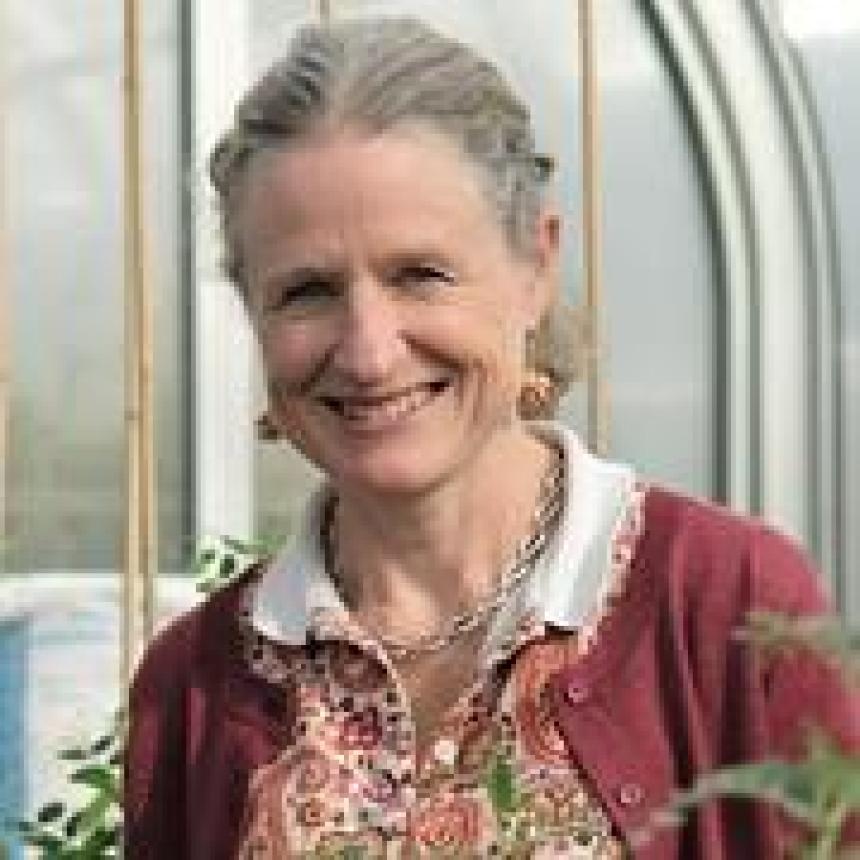
Dr Julie Hayes
Grant-Funded Researcher (A)
School of Agriculture, Food and Wine
Faculty of Sciences, Engineering and Technology
Eligible to supervise Masters and PhD - email supervisor to discuss availability.
Julie has a background in plant nutrition and physiology. She is especially interested in applying physiology to agricultural genetics and pre-breeding research, and in working towards genetic solutions to constraints for agricultural production.
My current position is funded by South Australian State Growth Funds, through a contract agreement with the South Australian Research and Development Institute (SARDI). I work closely with SARDI and University colleagues at the Waite Campus across a range of projects. I am primarily engaged in research around pulse protein, including physiology, genetics and pre-breeding for higher grain protein, and post-farm gate, where we are developing processing technologies for novel food ingredients derived from pulses. Pulses are an important component of the cropping rotation in Australia because of their ability to fix nitrogen and as a disease break to cereals. Increasingly, pulses themselves are a high-value commodity for grain producers, including in domestic markets. It will be important to continue to grow the pulse production industry as the health and environmental benefits of plant-based proteins for human consumption are realised.
-
Appointments
Date Position Institution name 2017 - ongoing Postdoctoral Fellow University of Adelaide, Adelaide 2004 - 2016 Postdoctoral Fellow Australian Centre for Plant Functional Genomics, Adelaide 2001 - 2004 ARC Research Associate University of Adelaide, Adelaide 2000 - 2001 JSPS-funded Postdoctoral Fellow Kagawa University, Takamatsu -
Education
Date Institution name Country Title Australian National University Australia PhD University of Melbourne Australia Bachelor of Agricultural Science
-
Journals
-
Book Chapters
-
Conference Papers
-
Patents
Year Citation 2010 Baumann, U. (2010). US 20100281583 A1, Boron transporter. USA. 2001 Richardson, A., Hayes, J., & Simpson, R. (2001). Expression of phytase in plants as a method of modifying plant productivity. -
Datasets
Year Citation - Hayes, J. (n.d.). APPF TPA phenotyping dataset: UA (Hayes) - Chickpea (pilot).
DOI -
Preprint
Year Citation 2024 Gimenez, R., Lake, L., Cossani, M. C., Ortega Martinez, R., Hayes, J. E., Dreccer, M. F., . . . Sadras, V. O. (2024). Linking phenology, harvest index and genetics to improve chickpea grain yield.
DOI Europe PMC12023 LAU, W. C. D., DONNELLAN, L., BRIGGS, M., RUPASINGHE, T., HARRIS, J. C., HAYES, J. E., & HOFFMANN, P. (2023). Sodium Doping and Trapped Ion Mobility Spectrometry Improves Lipid Detection for Novel Maldi-Msi Analysis of Oats.
DOI
-
Current Higher Degree by Research Supervision (University of Adelaide)
Date Role Research Topic Program Degree Type Student Load Student Name 2023 Principal Supervisor Improving doubled haploid production in Brassica napus L. by better understanding chromosomal doubling and embryo initiation. Doctor of Philosophy Doctorate Part Time Miss Kaat Lut K Devriendt -
Past Higher Degree by Research Supervision (University of Adelaide)
Date Role Research Topic Program Degree Type Student Load Student Name 2023 - 2023 Co-Supervisor Using targeted phenomics and environmental proxies to understand Phytophthora medicaginis and Phytophthora root rot resistance in Australian chickpea Doctor of Philosophy Doctorate Full Time Miss Nicole Marie Dron 2016 - 2021 Co-Supervisor Understanding Nitrogen Uptake, Partitioning and Remobilization to Improve Grain Protein Content in Wheat Doctor of Philosophy Doctorate Full Time Mrs Margaret Wambui Kirika 2012 - 2019 Co-Supervisor Confirmation of the barley vacuolar pyrophosphatase HvHVP10 as a candidate gene for salinity tolerance Doctor of Philosophy Doctorate Full Time Mrs Jessica Hilary Bovill -
Other Supervision Activities
Date Role Research Topic Location Program Supervision Type Student Load Student Name 2017 - 2021 External Supervisor Application of modern trait mapping methods to explore the genetic control of plant vigour in chickpea (Cicer arietinum L.) University of Western Australia - Doctorate Full Time Duong Nguyen
Connect With Me
External Profiles



